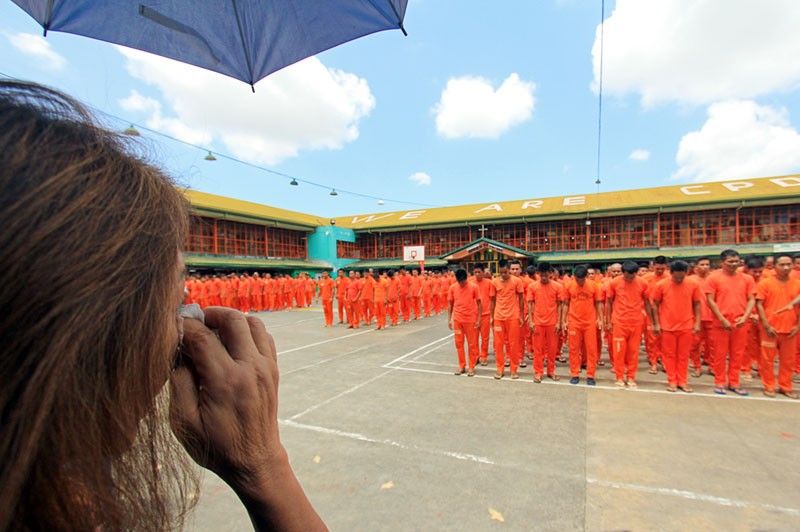Governor Garcia tackles congestion at CPDRC

CEBU, Philippines — She was moved to tears at the sight of the inmates dancing again – it’s been seven years since she last saw them, but for Governor Gwendolyn Garcia, it’s first things first.
In her return as Capitol chief, Garcia has promised to address the lingering congestion at the Cebu Provincial Detention and Rehabilitation Center (CPDRC). Dancing will have to take the backseat for now.
Cebu’s dancing inmates soared to global prominence during the previous administration of Garcia in 2010 to 2011, with their performances featured in many news outfits and television shows here and abroad.
“While I was thankful ganina nila nga nagpakita sa ilang presentasyon…but that will have to take lesser priority right now. Kay we must focus on decongestion and upgrading of the infrastructure,” Garcia told reporters during her visit to the facility in Barangay Kalunasan, Cebu City yesterday morning.
CPDRC’s 199 cells were built for 1,500 inmates only. The present headcount is 2,525. That means it now houses 70 percent more than its supposed capacity.
CPDRC warden Reynaldo Valmoria has implemented a moratorium on accepting inmates from towns and cities, seeing that the facility is now bursting at the seams with prisoners.
Garcia, for her part, said at least three solutions are being eyed to address overcrowding: one, to fast-track drug testing for inmates qualified for plea bargains; two, to tap more lawyers to help expedite the cases of inmates; and, three, to construct an additional building to be used by them.
Majority of the CPDRC inmates are facing drug charges. State prosecutors have informed Garcia that over a hundred of them have already complied with the conditions set forth in their plea-bargaining agreements.
However, their release has been deferred reportedly because of the “inefficiency” in the drug-testing process, which is conducted by two separate public centers not controlled by the jail management.
The reason? These centers are themselves already swamped with drug test examinees.
Valmoria revealed that only 10 inmates are usually tested for illegal drugs during the week. He said increasing the number will also quicken the release of inmates.
Garcia said she is also planning to accept the offer of the Association of Lady Lawyers to help hasten the disposition of cases against the inmates.
“I hope to link up with them aron mapun-an na to nga abogado nga maka-tackle aning kaso. Nga dili na PAO (Public Attorney’s Office) ra gyud... Maybe we can tap the volunteer services of our lawyers,” she said.
At present, only PAO lawyers assist most of the inmates in their cases, and they only visit the facility twice a week.
Cebu Provincial Police Office Director, Police Colonel Roderick Mariano, who accompanied Garcia in her visit yesterday, also relayed to the governor that there are plans to construct a separate building within the jail premises to be used specifically for inmates involved in drug-related crimes.
Meanwhile, Garcia expressed frustration at the “security problem” at CPDRC, saying that she plans to bring back the three-tier security system that operated during her previous incumbency.
She said numerous greyhound operations were conducted during her time, and that no illegal drugs were retrieved from the detention center.
This is not the case today, she added.
Mariano said the provincial police are willing to augment the security detail at the facility.
“We are supporting the management of the CPDRC… any time, tawagan lang ako,” he said.
But Garcia, in a separate interview, stressed that this need for support from the CPPO is a manifestation of the declining quality of security in the cells.
“While we thank Colonel Mariano that he would be willing if we would ask, but we will first study the possibility… of reverting to our tried and tested method which was the three-tier method… Dunay check and control,” she said.
As for the rehabilitation of former drug dependents after their plea-bargaining agreements, Garcia said she is studying the idea of turning them over to the Department of Health. — JMD (FREEMAN)
- Latest





















